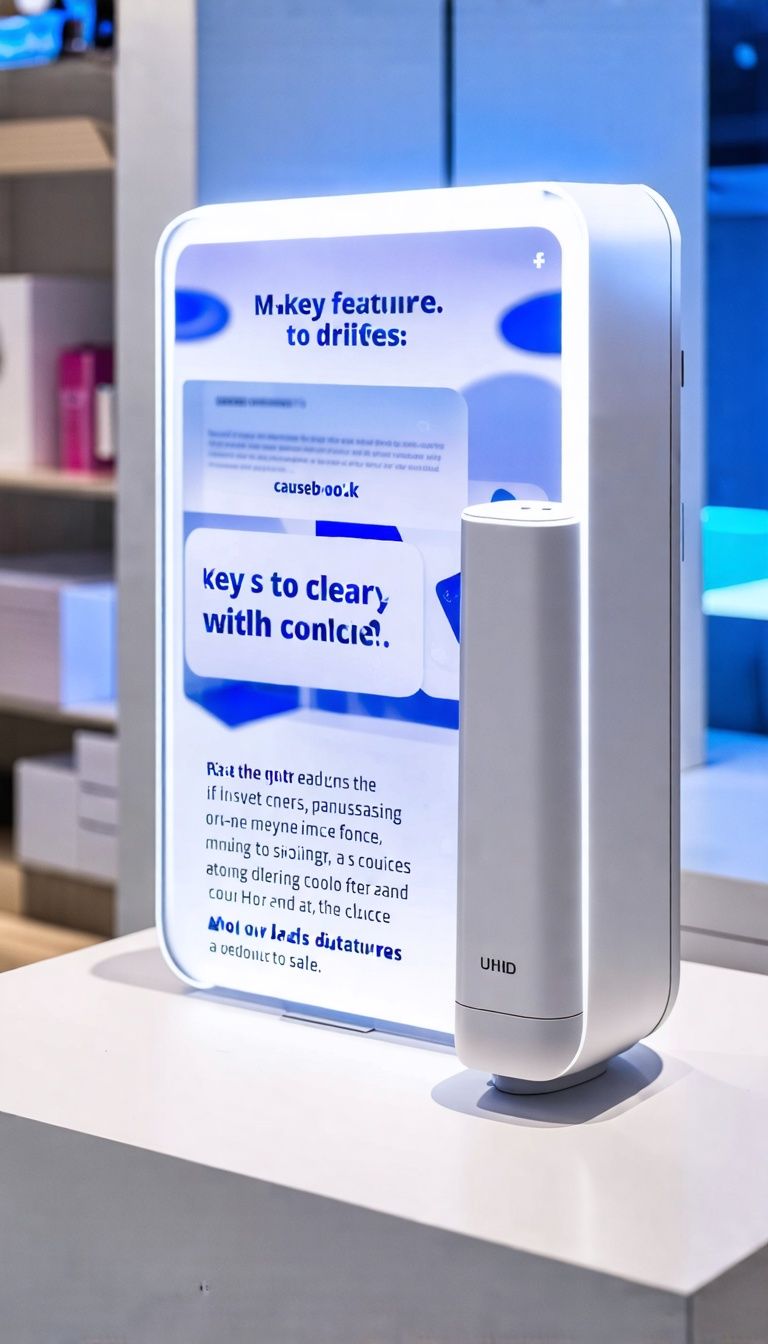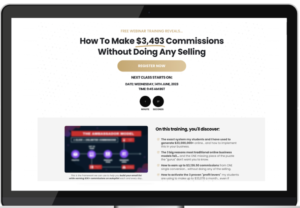vmg
How to Make It Look Like You’re Working at Your Remote Job
Working from home makes it easy to get distracted while still needing to look busy. Managers often think remote workers are less productive. This post shows you how to make it look like you’re working at your remote job with simple tricks.
Read on to stay sharp and keep your boss happy.
Keeping Your Communication Tools Active
Keep your Slack or Teams status set to âActiveâ to appear online. Use tools like mouse jigglers to prevent your status from turning idle.
Set Slack or Teams to âActiveâ
Setting your Slack or Teams status to âActiveâ is a simple way to appear engaged. Tools like mouse jigglers help avoid idle status by keeping your screen active. Apps like MsOutlookit make Reddit look like Microsoft Outlook, blending browsing with work tools.
Staying online shows youâre present without constant interaction.
Adapting to remote work means mastering the art of appearing productive.
Use tools like mouse jigglers to avoid idle status
Mouse jigglers keep your computer active during remote work. These tools mimic small movements of the mouse to prevent idle status on communication platforms like Slack or Teams. Employees often use them to appear engaged even during breaks.
Some devices plug into your USB port, while others are software-based. This helps avoid micromanaging concerns linked to employee monitoring systems. Tools like MsOutlookit also disguise web browsing as Microsoft Outlook for a productive appearance.
Stay active and ready for the next task with these handy tricks. Next, learn how to strategically respond to messages for maximum efficiency.
Strategically Responding to Messages
Plan your replies to align with peak work hours. Use email scheduling features to send messages at optimal times.
Schedule messages and emails in advance
Scheduling messages and emails can make you seem active even during downtime. Use tools like Gmailâs âSchedule Sendâ or Outlookâs delay feature. Workers often schedule emails to appear engaged while managing personal activities.
A 2020 study by SellCell found 61.6% of people use social media as a distraction during work hours.
Automation keeps you visible when you’re not physically present.
Set up email drafts in advance for timely responses. This method helps maintain productivity tracking without constant attention. Tools like Slack also allow scheduled messages for better communication flow.
Remote employees can balance work-life harmony using these strategies efficiently.
Reply promptly to critical messages
Quick replies to important messages show youâre engaged. Monitoring tools track your activity, even in incognito mode or private browsing. Many remote employees aim for three productive hours daily.
Answering urgent emails swiftly can mask slower times. Use tools like auto-replies for less critical responses while focusing on priority tasks. This keeps you active and responsive without constant effort.
Next, explore how fake productivity tools can help maintain appearances effortlessly.
Utilizing Fake Productivity Tools
Fake code generators can create the illusion of busy coding sessions. Dummy projects or task trackers help maintain a productive appearance without actual work.
Use fake code generators or scripts
Fake code generators like Hacker Typer can help remote workers simulate coding tasks. This tool creates realistic-looking scripts, making it seem like youâre working on complex projects.
Itâs a quick way to appear productive without actually coding.
Another option is FakeUpdate.net, which mimics system updates for IT professionals. This gives the illusion of being busy with technical work while avoiding idle statuses. These tools are user-friendly and easy to use in a remote work setup.
Appearances are often deceivingâuse them wisely.
Set up dummy projects or tasks
Creating dummy projects or tasks can help you appear busy during remote work. Tools like Hacker Typer simulate coding for non-programmers, making it look like youâre deep in development.
You can also make lists of made-up tasks in tools like Trello or Asana to show progress without actual heavy lifting. This approach keeps your activity visible on productivity tracking tools.
Using MsOutlookit disguises Reddit as Microsoft Outlook for a professional appearance while browsing the web. These small actions boost your online presence and keep others from questioning your workload.
Managing virtual meetings effectively ties into this tactic for seamless productivity appearances.
Managing Virtual Meetings
Schedule fake calendar events to appear busy. Use pre-made video backgrounds like Zoom or Teams for a polished look.
Schedule fake meetings on your calendar
Adding fake meetings to your calendar can help maintain the appearance of a busy schedule. Employees often simulate activity using this method to avoid looking idle. Use tools like Google Calendar or Outlook to block off time for these nonexistent tasks.
Prepared video backgrounds can also add a professional touch during virtual calls. This tactic keeps your status in work apps like Slack or Teams active without drawing suspicion.
Use prepared video backgrounds to look professional
A clean and professional video background makes a strong impression during remote work meetings. Owl Labs reports that 57% of employees face video or audio quality challenges in remote conferencing.
Using prepared backgrounds helps avoid distractions and maintains focus on the discussion.
Set up fill lights to improve visibility and ensure your camera works well with your chosen background. Apps like Zoom or Microsoft Teams offer virtual backdrops for free. Choose simple, non-distracting images to keep attention on you.
First impressions matter, especially in virtual settings.
Looking polished in meetings ensures others see you as engaged and ready for work. Next, learn how to optimize your online presence for better productivity tracking.
Optimizing Your Online Presence
Use private browsing modes like Chromeâs incognito for non-work activities. Stay visible on productivity trackers by keeping active tabs and windows open.
Disguise non-work-related browsing
Monitoring tools track browsing history even in private modes like InPrivate browsing or deleted history. Employees often hide non-work activities by simulating work tasks. Browsers such as Google Chrome, Mozilla Firefox, and Internet Explorer may still log activity despite private settings.
Some workers switch to remote desktop services for untracked access. Open tabs with professional content can mask personal searches. Avoid obvious time gaps to maintain the appearance of productivity tracking tool engagement.
Appear engaged on productivity tracking tools
Hiding non-work browsing helps, but staying active on productivity tools matters more. CurrentWare tracks idle time and unproductive web use. It creates simple reports on computer activity for employers.
Keep your screen busy with work-related tasks or fake code generators to avoid appearing idle. Regularly interact with project management software or emails to show engagement. Use keyboard shortcuts or mouse movements to prevent lock screen activation.
This makes it seem like youâre focused and productive, even during slower work periods. Automation tools can help maintain an “active” status without constant effort. Staying visible on these platforms ensures you appear dedicated in remote environments.
[Short sentences! Lower Flesch-Kincaid Level 5-6.]
Leveraging Time Zones and Automation
Automate your morning login to match different time zones effortlessly. Use auto-reply tools to handle off-hour messages smoothly.
Automate morning logins for different time zones
Automating morning logins can save time for remote employees in different time zones. Tools like auto-login scripts or apps help simulate activity early in your workday. This keeps your status active on communication platforms like Slack or Teams.
It also avoids issues with productivity tracking tools. In 2015, ConnectSolutions found that 77% of remote workers reported higher productivity. Automation ensures you stay visible and engaged without manual effort.
Use these hacks to balance work-life needs while maintaining a professional online presence.
Use auto-replies for off-hour communications
Set up auto-replies for off-hour messages to manage expectations. Remote employees often work across different time zones, so this keeps communication clear. Tools like Outlook or Gmail allow custom responses for specific hours.
Auto-replies show youâre organized and respect work-life balance.
Remote workers tend to be more productive than in-office staff. Using auto-replies helps focus without constant interruptions. It also ensures colleagues know when to expect a response.
Next, learn how to optimize your online presence for remote work efficiency.
Conclusion
Looking busy while working remotely is easier than you think. Use tools like mouse jigglers and scheduled messages to stay active online. Keep your calendar filled with tasks and meetings, even if theyâre not real.
Stay responsive to important emails and chats to maintain trust. Balance work tricks with actual productivity for long-term success.
The Marketing Revolution: AI, Social Media And Influencers
Struggling to keep up with the fast changes in marketing? Many small business owners feel overwhelmed by new tools like AI, social media trends, and influencer strategies. It’s hard to know where to start—or how to stand out.
Here’s a fact: By 2025, AI-driven tools and short-form videos will dominate marketing. Platforms like TikTok and Instagram Reels are already reshaping how brands connect with audiences.
Staying ahead means adapting now.
At Vanquish Marketing Group Inc., we simplify the marketing revolution for you. From AI-powered content creation to leveraging influencers and mastering short-form video, we help your business thrive in this digital age.
Ready to transform your strategy? Keep reading—your next big idea is just a scroll away!
Key Takeaways
- By 2025, AI-driven tools and short-form videos will dominate marketing. Platforms like TikTok and Instagram Reels are reshaping brand-audience connections.
- AI enhances marketing through personalized content, mood-based customization, and predictive analytics. It helps businesses create campaigns that boost engagement and trust.
- Short-form video content drives over 70% of internet traffic. Platforms like YouTube see 60% of views from videos under 60 seconds, making them vital for small businesses.
- Micro-influencers with smaller but engaged followings increase Instagram story reach by 6%. Partnerships, like CSU Football’s campaign, can generate 1 million impressions effectively.
- Decentralized social media platforms (e.g., the Fediverse) offer more privacy and control for users while creating new opportunities for brands to connect authentically with audiences.
The Role of AI in Revolutionizing Marketing Strategies

AI is changing how businesses market their products—creating visuals, personalizing content, and listening to social media trends faster than ever. With AI tools, companies can connect with customers in smarter ways, making marketing more effective and efficient.
AI-Generated Visuals and Content
AI-generated visuals and content are transforming how small businesses market their brands. Tools like dynamic AI backgrounds, customizable avatars, and automated editing make it faster and easier to create professional-quality visuals.
These technologies allow businesses to produce customized imagery, videos, and graphics without needing a big team or budget.
By 2025, AI-driven video production will be a key part of digital advertising. Automated design tools help create striking content that captures attention on social media. This advanced technology saves time while inspiring creativity—making it ideal for small businesses aiming to thrive in competitive markets.
AI-Driven Personalization
Moving beyond AI-generated visuals and content, AI-driven personalization takes marketing to the next level. It uses machine learning to create advanced, customized strategies that connect with your audience on a deeper level.
By analyzing behavioral patterns, AI predicts what your customers want—even before they know it themselves. This means delivering anticipatory content that feels tailor-made for each individual.
AI also taps into mood recognition and emotional detection to refine marketing efforts further. Imagine tailoring ads or messages based on how someone feels in real-time—this is the power of mood-based customization.
Social listening tools powered by AI provide predictive insights, helping you stay ahead of trends and consumer needs. With these tools, small businesses can craft personalized campaigns that drive engagement and build stronger customer relationships—all while saving time and resources.
AI-Enhanced Social Listening
AI-powered social listening changes how companies understand their audience. By using tools like sentiment analysis and predictive analytics, it tracks real-time feedback on social media platforms.
This helps small businesses identify trends, study customer behavior, and gain useful consumer insights—all to make better marketing decisions.
With AI-driven market research and text analysis, brands can keep an eye on competitors and stay ahead of industry changes. These tools provide actionable data for creating campaigns that truly connect with your audience.
It’s about turning online conversations into opportunities—making sure your strategies match what customers want right now.
The Impact of Social Media Trends on Marketing
Social media trends are reshaping how businesses connect with their audience—short-form videos and interactive features boost engagement like never before. Brands now focus on micro-influencers and social commerce to build trust and drive sales effectively.
Rise of Short-Form Video Content
Short-form video content is changing how businesses connect with audiences. Over 70% of internet traffic now comes from short videos, making them a vital part of digital marketing.
Platforms like TikTok, Instagram Reels, and YouTube Shorts have grown fast—60% of YouTube views are for videos under 60 seconds. The COVID-19 pandemic sped up this trend as people spent more time online.
For small business owners, short-form videos are a powerful tool to boost engagement and attract new customers. These quick clips grab attention fast and work well for showing off products or sharing tips.
They’re easy to make and share across social media, helping businesses stay relevant in today’s fast-paced online world.
Integration of Social Commerce
Social commerce is transforming how small businesses connect with customers. Platforms now combine shopping and social media, allowing users to buy products without leaving their favorite apps.
Interactive ads, sponsored challenges, and AR filters let customers try products virtually—increasing engagement and trust. Short-form video content boosts sales by showing products in action.
Customizable advertising options help businesses target the right audience effectively. By adding social commerce to your strategy, you can turn casual browsers into loyal buyers while staying ahead of trends like mobile marketing and consumer engagement.
Influencer Marketing with Micro-Influencers
Moving past social commerce, micro-influencers are changing how small businesses connect with their audience. These creators—often with smaller but highly engaged followings—create authentic content that truly resonates.
For instance, a partnership with CSU Football led to 1 million impressions, proving the impact of genuine collaborations. Micro-influencers also increase Instagram story reach by 6%, offering a budget-friendly way for brands to grow their visibility.
Student brand ambassadors and nanoinfluencers take this strategy even further. Their relatable voices build trust and drive engagement without the high costs of bigger influencers.
By focusing on teamwork in marketing and ethical transparency, small businesses can use these trends to build real connections and achieve measurable results.
Interactive Features to Drive Engagement
Interactive features are transforming how businesses connect with their audience. Choose-your-own-adventure videos let viewers control the story’s direction, creating a fun and engaging experience.
Real-time tools like polls or live chats allow customers to share instant feedback, making them feel heard and valued.
Gamification turns marketing into a game, encouraging participation through rewards or challenges. Interactive ads and sponsored challenges grab attention while building brand loyalty.
These tools boost user engagement and help small businesses stand out in crowded social media spaces.
Next, we’ll examine how decentralized social media platforms are changing marketing strategies for the future.
The Emergence of Decentralized Social Media Platforms
Decentralized social media platforms are changing how brands connect with audiences—offering more control and privacy. These platforms, like the Fediverse, allow businesses to explore new ways of engaging users without relying on traditional networks.
Understanding the Fediverse
The Fediverse is a decentralized network of social media platforms. Unlike traditional platforms, it runs on open-source systems controlled by users. No single company owns or controls the entire network, giving users more privacy and freedom to connect across different platforms easily.
Decentralized social media uses blockchain technology for stronger security and resistance to censorship. Platforms in the Fediverse enable peer-to-peer interactions without depending on centralized servers.
Since 2022, competition has increased as more people look for alternatives to mainstream options. For small businesses, this shift creates new opportunities to connect with audiences while supporting values like transparency and sustainability—key trends shaping today’s marketing strategies.
Implications for Marketing Strategies
Decentralized social media platforms are transforming how businesses connect with their audiences. Platforms like the Fediverse operate on peer-to-peer networks, removing centralized control.
For small businesses, this opens up fresh opportunities to interact with audiences and build trust—essential for addressing misinformation concerns.
Marketing strategies need to adjust to these changes. Focus on creating reliable content that reflects your brand values while nurturing strong advertiser relationships. Decentralization also boosts user involvement, making it easier to engage directly with your audience and form lasting partnerships without depending only on traditional advertising methods.
The Influence of Influencers in Modern Marketing
Influencers are reshaping modern marketing by building authentic connections with audiences. Partnering with the right influencers can boost brand trust and drive real results—learn how to make it work for your business.
Leveraging Influencer Partnerships
Influencer partnerships are a great way to grow your brand. Micro-influencers and student ambassadors can connect with niche audiences, building trust and authenticity. For example, a collaboration with CSU Football reached 1 million impressions—showing how genuine creator partnerships expand reach effectively.
Social media influencers help brands tap into engaged communities. By working with content creators, businesses can create sponsored content that feels natural and relatable. These marketing collaborations often lead to higher engagement rates compared to traditional ads—making them a smart choice for small businesses looking to stand out online.
Next, let’s explore the ethical considerations behind these partnerships….
Ethical Considerations and Transparency
Ethical considerations and transparency are crucial in modern marketing. Today’s consumers value honest content creation and authentic brand collaborations. Aligning your brand with viewer values builds trust and loyalty.
Transparent partnerships show accountability, especially when addressing controversies like investigations into major platforms.
Responsible content creation ensures your audience feels respected. Ethical marketing practices focus on clear communication and genuine connections. Influential brand partnerships succeed when they reflect viewers’ moral principles.
Prioritizing ethical social media influence helps small businesses stand out while staying true to their mission.
Predictive Insights for Campaign Success
Predictive insights assist small businesses in staying competitive by using AI to analyze trends and consumer behavior. These tools utilize social listening and advanced analytics to anticipate audience desires—before they are aware of them.
With data-driven marketing, you can create focused content that enhances engagement and generates results.
AI-powered tools also offer predictive modeling for campaign success. They identify patterns in audience behavior, enabling smarter decisions about influencer outreach and digital ads.
This method ensures your campaigns are both effective and cost-efficient, providing a competitive advantage in today’s rapidly changing market.
Advanced Analytics and Data-Driven Marketing
Advanced analytics help businesses make smarter decisions by turning data into actionable insights. With customizable advertising options and enhanced collaboration tools, companies can fine-tune their strategies for better results—and stay ahead in the competitive marketing landscape.
Customizable Advertising Options
Customizable advertising options allow small businesses to design ads that meet their unique needs. With advanced analytics, you can target specific audiences and craft messages for better results.
Use interactive ads, AR filters, or sponsored challenges to capture attention and increase engagement.
These tools let you tweak campaigns in real-time using data insights. Personalized marketing ensures your promotions connect with the right audience—boosting conversions without wasting resources.
Enhanced Collaboration Tools
Moving beyond customizable advertising options, enhanced collaboration tools are changing how small businesses work together. These tools provide real-time feedback, shared workspaces, and integrated asset libraries—making teamwork faster and more efficient.
AI-powered features improve productivity by simplifying communication and decision-making.
With advanced data processing and collaborative software, teams can share information effortlessly. This boosts efficiency and helps businesses make smarter decisions using data-driven strategies.
Enhanced collaboration tools keep everyone connected—no matter their location—while pushing team productivity to new levels.
Predictions for Future Marketing Trends
The future of marketing is changing fast, thanks to AI, VR, and AR. By 2025, AI will likely create personalized video ads based on individual preferences—making ads more engaging than ever.
Virtual and augmented reality will also grow, offering immersive experiences that grab attention.
Sustainability and ethical practices will matter more to consumers. Brands that match these values will stand out. Social media algorithms are always evolving, so staying ahead means adapting quickly.
Personalized ads and predictive analytics will help small businesses target customers better—ensuring campaigns succeed every time.
Sustainability and Ethical Content in Marketing
Sustainability and ethical content are reshaping marketing—aligning brand values with consumer expectations builds trust, loyalty, and long-term success… discover how your business can lead the way!
Aligning Brand Values with Consumer Expectations
Today’s consumers care deeply about brand values, especially authenticity and social impact. Small businesses can build trust by aligning their practices with customer expectations.
Transparent partnerships, ethical content creation, and sustainable practices show you value more than just profits.
Addressing controversies openly strengthens consumer trust. Highlight your commitment to environmental responsibility and purpose-driven marketing in every campaign. This builds brand integrity while meeting the demand for accountability in modern business.
Strategies for Incorporating Sustainability
Sustainability is more than a trend—it’s essential in today’s marketing world. Small businesses can align their brand values with eco-friendly messaging to meet customer expectations.
Start by reducing your video production carbon footprint and using sustainable content creation methods. Emphasize ethical sourcing and highlight responsible consumption in your campaigns.
Honesty strengthens trust. Be transparent about your efforts to protect the environment, such as using green materials or supporting climate-friendly projects. Highlight corporate social responsibility in your branding to connect with customers who prioritize eco-conscious choices.
These actions build credibility and encourage long-term loyalty among environmentally aware audiences.
The Future of Content Creation
The future of content creation focuses on user-generated strategies and personalized content, offering fresh ways to connect with audiences—discover how these trends can transform your marketing efforts.
User-Generated Content Strategies
User-generated content (UGC) is a great way to make your brand feel more human. It allows customers to share their experiences, creating real and honest connections. Sharing behind-the-scenes moments, reposting screenshots, or adding humor can make your brand seem approachable and trustworthy.
Ask customers to post photos, videos, or reviews of your products. This builds a sense of community and increases engagement. UGC also helps tell personalized stories—real people sharing real experiences often connect better than overly polished ads.
Focus on interactive content that starts conversations and keeps your audience involved in creating content with you.
The Growth of Personalized Content
Personalized content is changing how businesses connect with their audience. With advanced machine learning, brands can now create content based on predicted behaviors. This means messages, visuals, and recommendations are customized to match individual interests—boosting engagement and loyalty.
AI-powered personalization goes even further by delivering user-specific content in real time. Flexible strategies make every interaction feel unique, from targeted email campaigns to individualized social media ads.
Small businesses can use these tools to create standout experiences in today’s competitive market.
Adapting to Changing Consumer Behaviors
Stay ahead of social media algorithm updates and adjust your marketing strategies to meet evolving consumer needs—discover how to thrive in 2025 and beyond by reading more.
Staying Ahead of Social Media Algorithm Updates
Social media algorithms change often, making it harder to reach your audience organically. These updates can reduce engagement and impact how well your content performs. To stay ahead, focus on creating high-quality posts that connect with your audience—this helps maintain engagement even as platforms evolve.
Adapting to algorithm changes requires flexibility and testing new strategies. Use analytics tools to track what works and adjust quickly. By understanding shifting consumer habits, you can refine your approach to stay relevant and effective in 2025 and beyond.
Adapting Marketing Strategies for 2025 and Beyond
Marketing strategies need to adapt to keep up with shifting consumer behaviors and new trends. By 2025, AI-powered tools will play a larger role in creating personalized campaigns.
These tools can analyze data quickly, predict trends, and deliver content that connects with your audience. Social media platforms are also changing—short-form videos and interactive features will drive engagement.
Sustainability and ethical advertising are becoming top priorities for consumers. Brands that align their values with these expectations build stronger relationships. Virtual reality (VR) and augmented reality (AR) will enhance customer experiences by offering immersive ways to showcase products or services.
Staying updated on social media algorithm changes ensures your strategies stay effective as platforms evolve.
Conclusion
The marketing revolution is here—AI, social media, and influencers are reshaping how businesses connect with audiences. Vanquish Marketing Group Inc. helps small businesses use AI-driven tools, short-form videos, and influencer partnerships to grow their brands.
These strategies are practical, easy to implement, and deliver real results quickly. By staying ahead of trends like personalized content and interactive features, your business can thrive in 2025 and beyond.
Ready to transform your marketing? Let’s start today!
Unveiling the Latest Innovations in High-Level Software with AI
Are you struggling to keep up with the latest software updates? HighLevel has introduced over 300 new features this year. This blog will guide you through what’s new in high-level software with AI.
Get ready to see how these innovations can help your business!
AI Enhancements in Sales and Marketing

AI is changing how businesses sell and market. New tools help boost sales and improve marketing strategies, making tasks easier for teams.
HighLevel + AI Integration
HighLevel integrates AI to boost sales and marketing. This helps businesses use advanced tools to improve their work. For example, generative AI can create content quickly. HighLevel also supports customer relationship management (CRM) with these smart features.
Agencies can add custom menu links in SaaS plans with ease. The platform connects well with Google Drive, WooCommerce, and Shopify for smooth operations. Businesses save time by automating tasks and improving efficiency through AI-based systems.
Funnel AI (Beta)
Next up is Funnel AI (Beta). HighLevel has made this tool to generate optimized funnels. These funnels help businesses meet their goals. It is part of over 300 new features and enhancements.
Funnel AI makes business processes smoother, said the project manager.
Funnel AI is still in its Beta stage, so it’s a work in progress. HighLevel aims to improve process efficiency with this feature. This means better sales and marketing results for users.
CRM Innovations

Software for customer relationship management (CRM) is getting smarter. New tools help you track tasks and compare data easily.
Visitor Data Widgets
Visitor Data Widgets show detailed metrics on custom CRM dashboards. These widgets help track website and funnel performance using clear visualizations. One key feature is the Comparison Percentage.
It shows if performance trends are going up or down.
Pie chart visualizations display page views and sales in Funnels & Websites. This helps users see which pages get the most visitors or generate sales quickly. Update custom values in workflows with ease, making math operations smooth and efficient for any user working with data models.
Recurring Tasks
HighLevel’s latest features automate recurring tasks. This boosts productivity by handling routine processes. It frees up time for more important jobs.
Automation is key to efficiency, said Chief Information Officer, Jane Smith.
Set up recurring tasks once and let the system work. AI-powered tools manage repetitive business processes without errors or delays.
Comparison Dashboards
Comparison Dashboards offer enhanced tools for tracking performance trends. They provide detailed performance metrics and visualizations. These help analyze data patterns for better decision-making.
| Feature | Description |
|---|---|
| Comparison Percentage | Tracks performance trends over time. |
| Performance Metrics | Offers detailed insights into various performance indicators. |
| Data Visualizations | Helps in analyzing data patterns visually for easier comprehension. |
Next, let’s explore updates in Ecommerce and Payments.
Ecommerce and Payments Updates

Our new updates simplify how you handle online sales and payments. These tools make shopping easier for your customers and help your business grow.
Upsell Products at Checkout
Upselling at checkout boosts the average cart value. This feature is now part of the eCommerce module. It helps increase sales and revenue.
Use this tool to suggest related products right before customers complete their purchase. Encourage them to add more items to their cart, like accessories or higher-end versions. For example, if a customer buys a phone case, suggest they also buy screen protectors or chargers.
PayPal Support for Payment Element
HighLevel now offers PayPal and PayLater in payment elements. This gives users more ways to pay at checkout. Secure and flexible payments make the process smooth.
PayPal expands options for paying online. It makes transactions safe and easy. “Our goal is to provide secure payment solutions,” said a HighLevel rep.
We aim to give every user a choice that fits their needs.
Pause and Resume Subscriptions
After talking about PayPal support, let’s move to a new feature: pausing and resuming subscriptions. This feature gives users control over their subscription plans.
- Flexible Planning
Users can pause their subscriptions whenever needed. It allows for better management of resources.
- Draft Invoices During Pauses
Draft invoices are created when a subscription is paused. Customers can review these before resuming payments.
- Customer Relationships
It’s essential in maintaining good customer relationships. Customers feel valued and less pressured during breaks.
- Easy Management
The interface is user-friendly. Subscribers can manage pauses easily without much hassle.
- Avoiding Losses
Businesses avoid losing customers because they can pause instead of canceling the service entirely.
- Support for Multiple Industries
This feature works well for many sectors like software development, cloud services, and ecommerce platforms.
- Quick Resumption
When ready, customers can quickly resume their subscriptions with a few clicks.
- Example of Use Case
An online content platform lets members pause subscriptions during vacations or busy periods at work.
- Saves Time for Support Teams
Customer support teams spend less time handling cancellations due to flexible pause options available directly to subscribers.
- Increases Subscription Lifespan
Users who might have canceled are more likely to stay long-term if they have the option to pause temporarily.
Advertising Management Improvements

5. Advertising Management Improvements: New tools make ad campaigns easier and more effective. Read on to find out how!
Carousel Ads
Carousel ads in Ad Manager improve engagement. They allow users to swipe through multiple images or videos. This keeps their interest longer. Higher interaction means more conversions and sales.
Carousel Ads changed our strategy, says a marketing expert. Now we see better results.
Leads and Sales Insights
Ads often bring in many views. But not all views lead to sales. Leads and Sales Insights offer deep data on ad campaigns. It gives a clear view of what works and what doesn’t. This helps businesses optimize their ads for better results.
Detailed insights mean less guesswork. Companies can see which leads turn into sales and why. This saves time and money by focusing on effective strategies. Optimized advertising efforts boost overall performance, making it easier to reach goals like higher conversion rates or increased revenue.
Client Interaction and Management Tools
You can now book appointments through WhatsApp and customize contact forms with new features.
WhatsApp In-App Appointment Booking
Use WhatsApp for easy booking. Clients can schedule appointments in the app. This helps streamline communication and save time.
WhatsApp integrates with other tools like CRM systems. It works well with existing channels too. Businesses can improve client interaction and management easily.
Get started today to see how it improves your workflow!
Custom Fields in Contact Forms
Custom fields in contact forms let you gather specific information from clients. This helps create personalized interactions and enhances data management. For example, a custom field can ask about a client’s preferred method of communication – email, phone call, or text.
This feature also boosts efficiency for businesses. With better data collection, companies can track client preferences more easily. Custom fields are especially useful in CRM systems like HighLevel.
They allow detailed tracking and more personalized customer service experiences.
Quick Replies for Facebook and Instagram
Quick replies on Facebook and Instagram help businesses talk with customers faster. You can set up messages to answer common questions. This saves time and makes clients happy.
Enhanced insights in the Social Planner make it easy to track which replies work best. This improves your social media strategy without much extra effort. By using quick replies, you streamline your communication on these platforms effectively.
Workflow and Analytics Enhancements
The latest updates bring better workflow and analytics tools. Track your email stats more easily, and use the new dashboards to keep an eye on your listings online.
Workflow Email Statistics Integration
Workflow email stats now work with email campaign analytics. This gives you detailed insights into how your emails perform.
You can see open rates, click rates, and other important data. These insights help improve workflow efficiency and effectiveness.
Analytics Dashboard for Online Listings
The Analytics Dashboard for Online Listings offers clear performance metrics. It shows how well your online listings are doing. You can see which locations get the most views and clicks.
This helps improve your listing strategy.
Expanded availability reaches 13 more countries. Now, you have access to even more data from these regions. The dashboard gives a full view of all your online listings with ease.
Prospecting Tool – Analytics Dashboard
Prospecting Tool’s Analytics Dashboard shows lead generation metrics and visualizations. It helps you track and manage leads easily. The dashboard offers clear insights into your prospecting performance.
This means you can see how well your team is doing in real-time.
You get to see all the key data at a glance. This includes information like number of leads generated, where they come from, and their success rate. These insights help improve sales strategies quickly.
Use this tool for better decisions with less guesswork involved.
Platform Integrations and Support
HighLevel now works better with many popular platforms. You can enjoy smoother workflows and more efficient tools.
Google Drive Integration
Google Drive integration syncs files with HighLevel’s media storage. This makes it easy to manage and access files. Users can update documents in one place, saving time and effort.
This tool also enhances file management. It offers seamless connections with existing tools. This boosts productivity for users working on multiple projects.
WooCommerce Integration
Integrating Google Drive helps to manage files, but WooCommerce makes ecommerce seamless. It syncs your products and inventory for easy management.
Smooth ecommerce operations become possible with WooCommerce’s advanced features. Use it to keep track of sales and ensure up-to-date stock levels. This integration boosts both reliability and customer experience in your online store.
Microsoft Teams Integration
Microsoft Teams Integration boosts team collaboration. It helps streamline workflows and communication. This integration allows quick sharing of documents, chats, and video calls within the platform.
Teams can manage projects better with shared calendars and task lists. Users can get real-time updates on progress. The tool is easy to use and connects well with other apps like Google Drive and WooCommerce.
Conclusion
The new HighLevel software changes the game. With over 300 updates, it makes work easy and fast. The AI tools help teams win in sales and marketing. Plus, new features like Google Drive and WooCommerce make it even more flexible.
Enjoy better interactions with clients and boost your business now!
Mastering Small Business Marketing Strategies For Success In 2024
Are you struggling to get your small business noticed? Small Business Marketing can help turn things around for you. With the right strategies, 2024 could be your year of success. Stay with us to learn how!
What Is Small Business Marketing?

Small business marketing is all about letting people know your business exists. You use simple ways to share what you sell or do. It can be online, like Facebook ads and Google Maps listings, or offline with mail and shipping deals.
Marketing helps small businesses grow by reaching the right audience at the right time. James Turner of Marketing Pro says, “Good marketing draws customers in like a magnet.” Use email lists and social media to keep folks interested.
Make sure each effort tells your unique story clearly and simply… that’s key!
Why Is Small Business Marketing Essential?
Marketing helps small businesses grow and thrive. It lets you reach new customers and build strong relationships with existing ones. Using tools like email marketing, social media, and Google Ads can make a big difference.
Businesses that use these tools tend to see higher sales and more loyal customers. Marketing also helps you stand out from your competition.
Good marketing allows your business to be seen by the right people at the right time. Without it, even the best products might go unnoticed. Engaging with platforms like Instagram or Pinterest can greatly increase visibility…
reaching thousands of potential customers daily! Effective strategies mean more traffic to your website, more interest in your services, and ultimately—more sales!
https://www.youtube.com/watch?v=BLPQwwVLni4
Types of Small Business Marketing
4. Types of Small Business Marketing: There are many ways to market a small business, each with its own perks and methods… Keep reading to find the best fit for your needs!
Email Marketing
Email marketing helps you reach your audience directly. Send newsletters to share updates, promotions, or tips. Use tools like Mailchimp or Constant Contact for automation and tracking results.
Make sure your emails look good on mobile devices too. Many people read emails on their phones now. Include clear calls to action, like “Sign up today” or “Learn more”. Keep messages short and engaging.
The key is making the message personal. – Jane Doe, Marketing Expert
Social Media Marketing
Social media marketing is powerful for small businesses. Platforms like TikTok, Twitter, and Pinterest are great places to reach new customers. Post engaging content often and respond quickly.
Use targeted ads on these platforms to boost your reach. Work with influencers who align with your brand for wider visibility. This strategy can drive traffic back to your website or stores…
leading to more sales!
Content Marketing
Share useful content to attract and keep customers. Write blogs, make videos, start podcasts, or publish guides.
Use keywords like “vpn” and “tik tok” to boost your reach. Keep the content engaging and informative… always focused on helping your audience.
SEO Marketing
SEO Marketing helps your website show up higher on search engines. This makes it easier for people to find you online. A well-optimized site can attract more visitors and turn them into customers.
Use keywords that relate to your business, like “business credit cards” or “gas cards.” Make sure your content is easy to read and helpful. High-quality content keeps visitors longer and improves rankings.
Don’t forget mobile users—make your site mobile-friendly for better SEO results!
Mobile Marketing
Mobile marketing uses smartphones and tablets to reach customers. It includes SMS, mobile apps, and ads on social media platforms like Pinterest. People carry their phones everywhere, making this a strong tool for small businesses.
Simple steps can boost your business. Create mobile-friendly newsletters with clear calls to action. Use credit card travel miles rewards to attract loyal customers. Next up: Traditional Marketing….
Traditional Marketing
Traditional marketing uses old-school methods like TV ads, print ads, and billboards. These methods still work well for small businesses today.
Print advertising includes newspapers, magazines, and brochures. They reach local customers easily. Billboard advertising gets attention from people driving by every day. Traditional marketing builds trust with familiar faces and brands in the community.
Worried about costs? Good news: many traditional options are affordable! Local radio stations offer budget-friendly ad slots. Neighborhood flyers cost very little but can attract lots of foot traffic to your store.
Use this timeless approach…it complements modern strategies perfectly!
Key Small Business Marketing Strategies for 2024
2024 brings fresh ways to market your small business. Stay ahead with these winning strategies….
Build an attractive and functional website
Make sure your website looks good and works well. Use bright colors and clear text to catch the eye of visitors. Your site should load quickly, so people don’t leave.
Add easy navigation with menus that make sense. Include a section for “About Us,” “Services,” and “Contact.” Make it mobile-friendly too! Most people use their phones to browse now.
Use keywords like “pintrist” if you’re sharing images or ideas. Keep content fresh by updating pictures, blogs, or news often… This helps keep interest high and search engines happy!
Looking good online builds trust fast—so make it count!
Create and automate email campaigns
Keeping your website up to date is key, but you also need strong email campaigns. Email marketing can help you stay in touch with customers and boost sales.
Set up automated emails for different stages of the customer journey. For example, send a welcome email when someone signs up. Share special offers or newsletters at regular intervals.
Use tools that let you create these emails easily and track their performance. This saves time and ensures your message reaches all your customers on time!
Leverage social media for engagement and ads
Leverage social media for engagement and ads. Post interesting content on platforms like Facebook, Instagram, and Twitter. Engage with your followers by replying to comments and messages.
Use ads to reach a broader audience. Target specific groups based on age, location, or interests. Social media ads are cost-effective and can boost visibility quickly. Try newsletter advertising if you have an email list too!
Collaborate with influencers
Small businesses should collaborate with influencers to reach more people. Influencers can share your products with their followers, boosting visibility and trust. Select influencers whose audience matches your target market.
When you work together, create clear goals. Set terms for how the influencer will promote your business. It’s a win-win! They gain content and you get publicity. It’s an essential part of small business marketing in 2024.
Optimize for SEO to increase visibility
Optimize your website for SEO to increase visibility. Use keywords like “small business marketing” and add them in titles, headings, and meta descriptions. Create high-quality content that answers common questions from your audience.
Make sure your site loads fast on all devices. Search engines rank faster pages higher. Also, get backlinks from other trusted sites to boost trustworthiness… This makes search engines see you as an authority.
Utilize local partnerships to grow your presence even more!
Utilize local partnerships
Work with local businesses to grow together. Partnering helps you reach new customers. Team up for joint promotions or sponsored events. Share each other’s social media posts.
Host community events at local venues. People love supporting nearby businesses. Offer discounts for patrons who visit both locations, boosting traffic and sales… A win-win!
Tools to Enhance Small Business Marketing
Using the right tools can make a big difference in your business marketing. Some tools help with email campaigns, social media posts, and SEO efforts… making everything smoother!
Email Marketing Tools
Email marketing tools help small businesses reach customers. These tools send newsletters, promotions, and updates. They track open rates and clicks to see what works best.
Popular email marketing tools include Mailchimp and Constant Contact. Both offer templates to create attractive emails quickly… plus features for automation! With these tools, you can set emails to go out on a schedule—saving you time while keeping your audience engaged.
Social Media Marketing Tools
Social media marketing tools help small businesses grow online. They make it easy to plan and post content on sites like Facebook, Instagram, and Twitter. These tools can also track how well your posts are doing by showing you likes, shares, and comments.
Some popular options include Hootsuite, Buffer, and Sprout Social. These let you schedule posts in advance and see all your social accounts in one place. With features like these, you save time and reach more people…
helping your business shine!
SEO Optimization Tools
SEO tools help you rank higher on search engines. They analyze your website and find ways to improve it. Useful SEO tools include Google Analytics, Moz, and SEMrush.
These tools give insights into keywords, backlinks, and site traffic. Use them to increase visibility… attract more customers! Next, let’s look at Customer Relationship Management (CRM) Systems.
Customer Relationship Management (CRM) Systems
Customer Relationship Management (CRM) systems help keep track of customer interactions. They store data to improve business relationships. This makes it easier for small businesses to manage and analyze customer information.
With CRM, you can streamline your marketing efforts. It helps segment customers, send targeted emails, and follow up on leads. Better organization means better service…and happy customers!
Creating an Effective Marketing Plan
Creating an effective marketing plan starts with clear goals. Understand your audience and pick the best strategies for them….
Define your goals and objectives
Set clear goals for your marketing. Know what success looks like. It could be more customers, higher sales, or greater brand awareness.
Decide on specific objectives. Break down big goals into smaller steps. For example, aim to gain 500 new social media followers in three months or increase website traffic by 20% in six months.
Clear targets guide your actions and track progress easily.
Know your target audience
To market well, you must define your goals and objectives. Next, it’s crucial to know your target audience. Recognize who will benefit from your product or service. Understand their needs and preferences.
Research can help a lot here. Look at age, location, gender, and income level. Check what social media they use most often too… and find out what kind of content grabs their attention the best!
Choose the right marketing strategies
Choose strategies that fit your business goals. Email marketing can be cost-effective. It helps in building relationships with customers. Social media is also powerful for engagement and ads.
Content marketing drives traffic to your website. Using SEO improves visibility on search engines. Local partnerships can bring new customers from nearby areas….
Measure and adapt strategies based on analytics
Choose the right marketing strategies, then track how well they work. Use tools like Google Analytics to see what brings traffic and sales.
Look at data often; don’t just set goals and forget them. Adjust your plans based on what works best for your business. This helps you grow faster and reach more customers.
Common Marketing Mistakes to Avoid
8. Common Marketing Mistakes to Avoid: Many small businesses miss key steps… explore these pitfalls and learn how to avoid them!
Ignoring the importance of a website
A good website is very important for small businesses. Without one, potential customers might think your business isn’t real. Many people use the internet to find services and products.
A clear and easy-to-use website can help you attract these customers.
Besides looking good, a website should work well on all devices. This means it should be mobile-friendly too. Your site needs to load fast and have updated info about your services or products.
Regular updates keep visitors engaged and informed.
Underestimating the power of social media
– Ignoring the importance of a website…
Social media is vital for small business marketing. Many users spend hours on platforms like Facebook and Instagram. Engaging with your audience here can boost your brand. Use eye-catching images, videos, and posts to grab attention.
Running ads on social media can also help you reach more people quickly. These ads let you target specific groups based on age, location, or interests. This targeted approach makes sure your message gets to the right people…
without wasting money!
Neglecting customer feedback
Listening to your customers matters. Social media can boost your brand, but customer feedback shapes it.
Ignoring feedback leads to missed growth chances. Customers feel unheard and may leave negative reviews… hurting your reputation. Feedback helps you fix problems and meet needs better—making happy and loyal customers.
Overlooking local market opportunities
Missing out on local market opportunities can hurt your small business. Local markets offer specific chances to connect with nearby customers. Building relationships with those close by helps improve brand loyalty.
Tap into community events and sponsor local gatherings. Engage in partnerships with other small businesses around you. Highlight the advantages of your services or products to locals.
This strategy boosts visibility and support from your neighbors, helping you thrive in the area!
FAQs
Got questions about small business marketing? We have answers to help guide your strategy!
What is the most cost-effective marketing strategy for small businesses?
Email marketing is the most cost-effective strategy for small businesses. It allows you to reach many customers at a low cost. You can send personalized messages, offers, and updates directly to your audience.
Social media marketing also stands out for its affordability. Platforms like Facebook and Instagram let you create free business pages. Paid ads on these sites are budget-friendly too, letting you target specific groups without spending much money.
How do different marketing strategies impact small business growth?
Different marketing strategies can boost small business growth in many ways. Email marketing helps build relationships with customers and keep them updated. Social media marketing increases brand visibility and engagement with a wider audience.
Content marketing attracts potential customers by providing valuable information. SEO (Search Engine Optimization) improves search engine rankings, making it easier for people to find your business online.
Mobile marketing reaches users on their phones, which is very important today. Traditional methods like flyers and direct mail still work well locally… Don’t ignore them! Each strategy has unique benefits that help businesses grow faster and reach more people effectively.
What are the best tools for tracking marketing results?
Use email marketing tools like Mailchimp. It helps track open rates and click-throughs. Social media marketing tools such as Hootsuite can monitor engagement on posts.
For SEO, use Google Analytics. It shows website traffic and user behavior. CRM systems, like HubSpot, help track customer interactions. These tools make it easy to see what works in your marketing efforts.
Conclusion
Small business marketing is key for success in 2024. Use these tips and tools to stand out. Stay flexible, try new things, and watch your business grow! Good luck on your journey!
Revolutionize Your Projects With AI Agent Creation Platform
Managing projects can feel like a maze. An AI agent creation platform will blow your mind! https://www.youtube.com/watch?v= offers a fresh way to simplify this process. Our article shows how it makes work easier and faster.
Keep reading; you’ll see why!
Benefits of using an AI agent creation platform

Moving from an introduction to AI agent creation platforms, let’s talk about why they are so useful. These platforms can change how you manage projects and communicate.
- Speeds up tasks: AI agents can do tasks much faster than humans.
- Reduces mistakes: They make fewer errors, making work more reliable.
- Saves money: Using AI cuts costs by handling work that people usually do.
- Improves customer service: AI agents can answer questions any time, day or night.
- Offers personal help: They learn from interactions to offer better help in the future.
- Makes data analysis easy: AI can quickly look through lots of information and find patterns.
- Handles many languages: AI agents can talk and understand different languages easily.
- Works all the time: They don’t need breaks or sleep, so they can work 24/7.
- Easy to update: Changing what an AI agent does is simpler than training a person.
- Makes decisions fast: AI can make quick decisions based on lots of data.
These reasons show why using an AI agent creation platform is a smart choice for businesses today.https://www.youtube.com/watch?v=l9A085KslBI
Streamlining project management and communication
Using an AI agent creation platform makes managing projects easier. Teams can share information quickly. Everyone stays updated with the latest changes. This cuts down on confusion and saves time.
Tasks get done faster when everyone knows what to do.
These platforms also improve how teams talk to each other. They offer tools that let members send messages, set meetings, and update project status in real-time. This means less waiting for replies or updates.
Projects move forward smoothly because communication is clear and fast.
Key features and capabilities of AI agent creation platforms
After discussing how AI aids in managing projects and improving communication, we now explore the main features and capabilities of AI agent creation platforms. These platforms offer tools that make creating and deploying AI agents straightforward.
| Feature | Capability |
|---|---|
| Pre-trained Models | Users can start with models trained on vast data sets, making AI agent creation faster. |
| Natural Language Processing (NLP) | Allows AI agents to understand human language, enabling them to interact in a way that feels natural. |
| Customization | Developers can tailor AI agents to meet specific project needs, ensuring flexibility. |
| Integration Capabilities | Easy integration with existing systems and APIs enhances functionality and streamlines workflows. |
| Scalability | Platforms can handle projects of any size, growing with your needs without sacrificing performance. |
| Automation Tools | Automate routine tasks, freeing up time for more complex project components. |
| Analytics and Reporting | Track AI agent performance and gain insights through detailed reports and analytics. |
| Learning and Adaptation | AI agents can learn from interactions to improve over time, offering better responses and services. |
These features signify how AI agent creation platforms are vital in developing intelligent systems that can automate and improve various aspects of project management and operations.https://www.youtube.com/watch?v=xdAKa8jFx3g
Conclusion
You learned how AI agent creation platforms can boost your projects. These tools make project management and communication easier. They have key features that help streamline tasks and improve teamwork.
Using them is simple and effective. Many organizations see great success through these methods. Take action now and explore how AI can change your work for the better!
Effective AI Strategies For SEO Optimization And Avoiding Google Detection
Struggling to boost your search engine rankings? AI-powered SEO tools can make a huge difference. This blog will show you how to use these tools effectively without triggering Google’s detection algorithms.
Stick around for practical tips and proven strategies that work!
Understanding AI in SEO

AI in SEO helps improve search results by using machine learning. This makes SEO more effective and smarter over time.
Definition of AI SEO
AI SEO uses artificial intelligence to improve search engine optimization. It helps webpages rank higher by analyzing data and content. Advanced algorithms like machine learning and natural language processing make this possible.
84% of bloggers used AI for their strategies in 2023. Tools like ChatGPT, HubSpot, and Jasper enhance keyword optimization and content quality. AI automates tasks, making SEO more efficient.
AI has changed the game for SEO, says a digital marketer at HubSpot.
Importance of AI in modern SEO practices
AI plays a huge role in modern SEO practices. It analyzes data sources, saves time, and gives valuable insights. Digital marketers using AI save an average of 12.5 hours per week—or 25-26 workdays per year! These savings let them focus on strategy rather than repetitive tasks.
AI tools automate many SEO tasks—such as site crawls, technical audits, and rank tracking. This boosts efficiency and accuracy. AI-driven content helps create better user experiences by targeting audience needs more effectively with keywords like backlinks and meta descriptions.
Plus, AI ensures that websites stay updated with Google’s ever-changing algorithms for optimal search engine results pages (SERPs) rankings.
Key AI Tools for SEO Optimization

Artificial intelligence (AI) helps boost SEO. Use AI tools to improve visibility and attract readers.
HubSpot AI Tools
HubSpot offers powerful AI tools for SEO. One key feature is the AI-powered blog content generator. This tool helps in creating engaging posts customized for your target audience.
HubSpot’s AI Search Grader analyzes brand visibility in search engines. You can use it for free to see how well your site ranks. Next, let’s explore RankIQ and its benefits for SEO optimization.
RankIQ
RankIQ is a powerful AI tool for SEO. It costs $99 per month. RankIQ helps you choose the best keywords for your content. It’s great for bloggers and website owners who want to improve their ranking on Google.
RankIQ gives users an edge by quickly identifying high-traffic but low-competition keywords.
This makes it easier to create content that ranks well. Users can also find suggested topics based on user intent and keyword research. With RankIQ, you get more visitors without spending hours on market research.
INK
INK is a powerful AI tool for SEO. It helps create optimized, seo content. INK uses natural language processing (NLP) to improve readability and relevance. This ensures your blog ranks higher on Google search.
It starts at $39 per month.
The tool also provides real-time feedback while you write. This means you can adjust meta tags, keyword usage, and structure instantly… making it easier to meet SEO standards. By combining INK with human editing, you enhance content creation without triggering Google’s detection systems.
Next up: Strategies to Enhance SEO with AI without Triggering Google Detection.
Jasper
Jasper is a powerful AI tool for content creation. It helps create SEO-friendly blogs, landing pages, and more. Jasper offers detailed keyword insights to improve search rankings. This tool can integrate with platforms like WordPress for smooth publishing.
Offering plans starting at $49 per month, Jasper is perfect for businesses of all sizes. Its AI-driven features ensure unique content that avoids Google detection. Next up: Strategies to Enhance SEO with AI without Triggering Google Detection….
Strategies to Enhance SEO with AI without Triggering Google Detection

4. Strategies to Enhance SEO with AI without Triggering Google Detection: Use NLP and mix AI with human edits… Keep content unique!
Use of Natural Language Processing (NLP)
NLP helps AI understand and generate human language. Google uses BERT to improve content relevance, context, and user intent. This boosts search result accuracy.
Google’s BERT model enhances how we interpret queries. – Sundar Pichai
NLP tools analyze keywords and phrases for better SEO strategies. They also ensure that generated content sounds natural, making it user-friendly. Techniques like keyword clustering make it easier to target specific demographics effectively.
Integration of AI with human editing to ensure content uniqueness
AI tools can generate tons of content fast. Yet, raw AI text may lack originality and sound robotic. Combining human editing with AI ensures unique and engaging content. Editors refine AI drafts by adding personal touches.
This blend keeps the text interesting and natural. Human touch adds context to keywords, fitting them seamlessly into the article. This strategy prevents Google detection and boosts SEO effectiveness…
leading us into advanced paraphrasing techniques to avoid detection….
Advanced paraphrasing techniques to avoid detection
Integrating AI with human editing ensures that content remains unique. Next, advanced paraphrasing can prevent detection by Google. Use synonyms and idioms for better readability.
Employ tools like QuillBot or Spinbot to rephrase sentences without losing meaning. Mix different words while keeping the context intact. Avoid repetitive phrases to dodge Google’s keen algorithms.
On-Page Optimization with AI

AI helps make your web pages better for search engines. It can give tips to boost content visibility…and improve user experience.
Optimizing for Google’s AI Summaries
Google’s AI Summaries can impact traffic. Direct Answer Snapshots may cut traffic by 50%, while Exploration Snapshots reduce click-through rates by 30-40%. Deep Dive Snapshots drop traffic by 25-35%.
“AI-generated summaries can lead to reduced clicks.”
Use Natural Language Processing (NLP) to make content flow naturally. Edit with human eyes for unique, engaging text. Add schema markup and infographics to stand out on Google SERP and improve indexing.
Boost your digital marketing strategy with smart SEO practices using HubSpot AI Tools, RankIQ, INK, and Jasper.
Tailoring content to SEO through AI insights
AI tools help shape SEO content by finding gaps and trends. Use these insights to improve your articles. HubSpot AI Tools, RankIQ, and INK are great examples. They suggest topics based on data-driven analysis.
Integrate AI findings with human tweaks for unique content. This prevents Google detection. Advanced paraphrasing techniques also play a role here. Make sure the final product feels natural and human-written.
Next, focus on off-page SEO tactics influenced by AI…
Off-Page SEO Tactics Influenced by AI
AI helps build smart backlinks, making your site more credible. AI-driven strategies also improve content distribution for better reach and engagement.
Building smart backlinks
Focus on guest posting to build smart backlinks. Write for blogs related to your industry. This improves brand reputation and visibility. Use HARO (Help A Reporter Out) to get mentions from journalists.
Engage in influencer marketing for backlinks. Influencers have a large audience. They can boost your credibility with their followers. Try winning industry awards; these often come with links from reputable sites, enhancing your SEO strategy without triggering Google detection.
AI-driven content distribution strategies
AI-driven content can reach a wider audience. Tools like RankIQ and Jasper analyze data to find the best times and platforms for posting. These tools automate tasks, making it easy to discover link-building prospects.
AI also helps in automatic internal linking, boosting site structure.
Using Natural Language Processing (NLP), AI tailors content for different audiences. This approach ensures the material feels natural and unique, reducing detection risks by Google.
AI-driven strategies enhance user experience (UX) by recommending popular forums and social media platforms such as Reddit or Quora for sharing.
Adapting to Google’s AI Algorithm Updates
Google’s AI updates can change how your content ranks. Stay current to keep your SEO strong and effective.
Understanding Google AI impact on search
Google’s AI, including BERT and RankBrain, has transformed search. RankBrain, started in 2015, helps Google understand complex queries better. BERT focuses on the context of words in a query.
These AI technologies analyze huge amounts of data fast. They improve search results for users by providing more accurate answers. Optimizing your content to match this can boost your SEO without triggering detection.
Use natural language and avoid keyword stuffing to align with Google’s algorithms like RankBrain and BERT.
Best practices for adapting content strategy
Shifts in Google AI impact search results. SEO must focus on content relevance, context, and user intent instead of just keywords. Create high-quality and deep content.
Always monitor algorithm updates closely. Adapt quickly to changes for better ranking. Use long-tail keywords with unique structuring strategies. Ensure mobile-friendly design for all users.
Ensuring Content Authenticity with AI
Use AI to make your content stand out. Ensure your keywords feel natural and unique.
Employing authenticity in keyword usage
Ensure keywords fit naturally. Use AI technology to identify the most relevant ones for your content. This keeps your writing authentic and helps with Google’s E-E-A-T guidelines: Experience, Expertise, Authoritativeness, Trustworthiness.
Avoid stuffing keywords unnaturally. Focus on readability—write as if speaking to a friend. Integrate user-generated content (UGC) since it often includes natural keyword use. Enhance SEO without triggering Google’s detection by using AI-assisted tools judiciously…tailor phrases to flow smoothly in sentences while keeping them contextually accurate.
Emphasizing unique structuring strategies
Use Natural Language Processing (NLP) to make your content feel more real. NLP helps you write like a human and keeps machines from spotting patterns. Blend AI-generated text with human edits for the best results.
This way, your articles stay unique and useful.
Focus on structure by using different formats—lists, bullet points, short paragraphs, and subheadings. Each one keeps readers engaged and improves SEO readability. Change the length of sentences to make them sound natural.
Add idioms or synonyms where needed; this adds flair without looking fake.
Advanced Techniques to Prevent AI Detection
Avoid AI detection with smart techniques. Use sophisticated vocabulary and scrambling tools… these methods help keep your content unique.
Employing higher level vocabulary
Using higher-level vocabulary helps your content seem more polished. However, Google’s algorithms can spot unnatural text. To avoid detection, use AI tools to enhance grammar and structure.
For instance, GPT-3 can assist with rephrasing sentences while keeping them engaging.
AI writing scrambling tools are also helpful. They change sentence patterns without altering the meaning too much. This makes it hard for Google to detect AI-generated content but ensures clarity for readers.
Utilizing AI writing scrambling tools
AI writing scrambling tools help make content look unique. Tools like SEO GPT 2 can change words and sentences while keeping the main idea. This avoids detection by Google’s algorithms.
Use these tools to rewrite text, but always check with human editors for quality.
Combine AI with higher-level vocabulary to sound original. This approach stops search engines from spotting patterns or repeated phrases. AI-generated summaries and advanced paraphrasing keep your content fresh yet relevant, helping you stay under Google’s radar.
Conclusion
Boosting your SEO with AI is smart. Use tools like HubSpot, RankIQ, and Jasper to gain an edge. Combine AI insights with human touch to stay unique. Optimize on-page elements and build strong backlinks.
Adapting to Google’s updates ensures you stay ahead in the game. Keep content authentic for better results.
Top ChatGPT Prompts for Perfecting Spelling, Grammar, and Common Mistakes
Struggling with spelling and grammar? You’re not alone; many people face this challenge. ChatGPT can help you improve your writing skills swiftly. This article shares 16 effective prompts to perfect your spelling, grammar, and common mistakes.
Read on for better writing!
Essential Prompts for Correcting Spelling Errors

Ask ChatGPT to fix spelling mistakes in your text. It can find and correct errors quickly, making sure your writing is clear.
Using direct correction requests
Ask ChatGPT to correct your text. Type the phrase, “Correct this text for spelling” followed by your content. For example: “Correct this text for spelling: I like to reed books.” ChatGPT will modify it to, “I like to read books.” This method helps you spot and fix errors quickly.
Direct requests save time and ensure accuracy. Use phrases like “Fix my spelling mistakes.” It identifies typos or misused words fast. This approach improves writing efficiency on social media posts or tweets.
Implementing contextual spell checks
Implement contextual spell checks to catch more than simple typos. ChatGPT can look at the context of a word in a sentence. This helps fix mistakes that basic spell-checkers miss.
For example, if you write “Their going to the store,” ChatGPT will know it should be “They’re.” Contextual checking improves accuracy and ensures your text makes sense. Use this for better proofreading results.
Context is key when checking spelling and grammar.
Grammar Correction Techniques with ChatGPT

ChatGPT can fix your grammar mess-ups quickly. It makes your sentences clear and correct… try it for perfect syntax and punctuation use!
Refining sentence structure
Ask ChatGPT to improve your sentence structure. Get prompts like, “Can you refine this sentence?” or “Make this sound clearer.” These help fix grammar and syntax issues.
Use specific requests such as, “Rewrite for native fluency,” or “Enhance readability.” This can make your writing crisp and easy to read. Tools like these can polish essays, emails, and even social media posts.
Enhancing syntax and punctuation
Fixing syntax and punctuation errors makes your writing better. Simple prompts can help with this. Ask ChatGPT to “Correct the sentence structure.” This improves clarity.
“Enhance punctuation marks in this text” refines commas, periods, and more. Strong syntax ensures each sentence flows well… leading to better reading!
Good grammar is the foundation of clear writing.
Commands to adjust spacing errors are next.
Addressing Word Spacing Issues

Fixing spaces in your text can be simple with ChatGPT. Use specific commands to correct spacing errors, ensuring neat and readable content.
Commands to adjust spacing errors
Use commands like “Fix spacing errors” to adjust text. Type “Remove extra spaces” for more precise fixes. ChatGPT can also handle multiple types of spacing issues within documents or paragraphs.
To ensure proper spacing, use prompts such as “Check for double spaces between words.” This checks the entire text quickly. Prompts like “Align text properly” help maintain consistent formatting across all sentences and paragraphs.
Techniques for ensuring proper spacing in text
Commands to adjust spacing errors can fix basic problems. But, for perfecting text, ensuring proper spacing is key. ChatGPT helps keep words and sentences neat.
To achieve this, use prompts that ask for specific adjustments. For example, “Fix double spaces in the text,” or “Correct uneven spacing between words.” These prompts make sure your writing is clean and readable.
Eliminate extra spaces by asking, “Remove any trailing spaces.” Also, request to “Align paragraphs properly,” so everything looks tidy in your document. You can also refine sentence structures with prompts like, “Check if all sentences have a single space after periods.”.
By using these simple yet effective commands and techniques within ChatGPT’s framework—your text will look polished and professional without much hassle!
Conclusion

Using ChatGPT for spelling and grammar can save time. It helps make your writing clear and correct. Try out these prompts today to see how much better your text can be!
Mastering Sales Letter Strategies: Selling on Fatty15.com


Struggling to write a powerful sales letter that converts? Frank Kern, a marketing expert, has proven strategies you can use. This blog will teach you how to apply Kern’s methods on Fatty15.com to boost your sales.
Keep reading for actionable steps!
Key Takeaways
- Identify your target audience to ensure your sales message reaches the right people. For Fatty15.com, aim for health enthusiasts and those interested in nutrition.
- Use curiosity-driven headlines that promise clear benefits. An example could be “Discover the Secret to Better Health with Fatty15”.
- Highlight unique product benefits such as Fatty15’s bioavailable formulation and patent-backed exclusivity, supported by clinical trials.
- Craft compelling stories to emotionally connect with potential buyers, making them more likely to engage and purchase.
- Include a clear and irresistible call-to-action like “Buy Now” or “Get Yours Today.” Utilize bold colors and visible CTAs on landing pages for better conversion rates.
Core Elements of Frank Kern’s Offer Strategy

Frank Kern’s offer strategy focuses on clear steps to boost sales. He uses specific tactics to grab the audience’s attention and showcase product benefits effectively.
Identifying the target audience
A well-identified target audience ensures your message reaches the right people. Shawnlebrun calls this group a “starving crowd.” This means finding people who need and want what Fatty15.com offers.
These are often health enthusiasts, nutrition-focused individuals, or those looking for supplements like omega-3.
In marketing terms, Shawnlebrun says, a starving crowd is just waiting to buy.
Understanding what these groups look for can shape your sales strategies effectively. Use forums like Warrior Forum to explore their needs and interests. Your next step involves highlighting unique product benefits specifically for them.
Highlighting unique product benefits
Fatty15 stands out with its bioavailable formulation. This helps your body absorb nutrients faster and more efficiently. The product is backed by a U.S. patent, ensuring its unique blend is protected and exclusive.
Clinical trials, supported by the American Association of Clinical Endocrinologists, show effective results in improving overall health.
The offer includes bonuses like free shipping and risk-reversal guarantees to make it irresistible. Scarcity tactics further enhance the appeal by offering limited-time promotions or discounts.
These strategies ensure that potential buyers feel compelled to act quickly to enjoy these benefits from Fatty15’s advanced medical technologies.
Crafting a Compelling Headline

Use words that make people curious and show the benefits of your product. A good headline grabs attention and makes readers want to learn more.
Using curiosity and benefit-driven language
Create headlines that spark curiosity and promise clear benefits. For example, “Discover the Secret to Better Health with Fatty15” makes readers curious and offers a direct benefit.
Use exciting words like “free,” as in “Get Your Free Step-by-Step Guide Now.” This approach can boost engagement. In Frank Kern’s video series, learn how storytelling techniques attract attention and drive action.
Building the Narrative

Use storytelling to make customers feel connected to the product.
Storytelling to connect emotionally with the audience
Storytelling brings the audience into the narrative and helps them feel connected. Erik Thorsvik said reading a sales letter should feel like engaging with a suspenseful book. Frank Kern uses stories to make readers relate to his offers on Fatty15.com.
Trey Smith saw greater success with error-filled sales copy because the compelling story drove engagement, proving that connecting emotionally boosts effectiveness. These emotional connections through storytelling can create trust, making customers more likely to buy products or services.
Presenting the Offer

Use clear language. Make your call-to-action simple and direct.
Clear and irresistible call-to-action
A clear call-to-action (CTA) can boost sales on Fatty15.com. Frank Kern’s strategies stress the importance of direct and compelling CTAs. Use phrases like “Buy Now” or “Get Yours Today”.
This creates urgency and prompts immediate action.
Make the CTA visible and easy to follow by using bold colors and large buttons on your landing page. Offer a special deal, such as a discount for first-time buyers, to make it more tempting.
Successful brands know that an irresistible offer drives conversions.
Act now! Limited time offer!
Conclusion and Next Steps
Focus on clear, engaging language in your sales letters. Use strong calls to action that urge readers to buy now.
Summarizing the benefits
Frank Kern’s sales strategies help in identifying the target audience and highlighting product benefits. His methods use curiosity and benefit-driven language to craft headlines that grab attention.
By sharing stories, sellers connect emotionally with buyers, making them more likely to act. A clear call-to-action ensures that the offer is irresistible.
Users discuss copywriting tips on platforms like Fatty15.com, learning from experts such as Marlon Sanders who created impactful sales letters for marketers. Even typos in letters can have varied impacts on buying decisions.
This approach makes it easier to sell nutritional products while maintaining brand experience.
Urging immediate action
Act now to maximize your sales letter’s impact on Fatty15.com. High-quality copy, like Marlon Sanders’, boosts conversions. Draw from Frank Kern’s five key offer components to create an irresistible call-to-action that stands out.
Ignoring typos can undermine the effectiveness of your message. Use clear offers and direct language to prompt immediate action from your audience. Optimize with tools like Google Analytics, A/B testing, and strong storytelling techniques for results.
Unveiling Profitable Marketing & Copywriting Examples: Consulting Sales Letter Analysis
Struggling with your consulting business? One key solution is the Consulting Sales Letter From Frank Kern » Swipe File Archive » Marketing & Copywriting Examples. This article will show you how to boost your sales efforts using proven strategies.
Keep reading for insider tips.
Consulting Sales Letter by Frank Kern

Frank Kern’s consulting sales letter shines as a powerful marketing tool. Every spring since 2012, it helps businesses boost their results.
Significance as a marketing tool
The consulting sales letter formulated by Frank Kern has remained a significant advertising asset since 2012. It functions as both promotional content and a lead generation medium, reflecting the significance of detailed client interactions in advertising strategy.
This methodology efficiently situates Frank Kern’s brand in the market while streamlining customer outreach via accentuating unique business consulting services.
Leveraging sales letters akin to Kern’s portrays a vibrant advertising strategy that boosts branding tool efficiency and market placement. By exploiting convincing copywriting, these letters address the targeted audiences directly, nurturing a bond stimulating response.
Hence, this procedure becomes critical for firms desiring to augment their client involvement through straightforward and influential messaging.
Annual run in the spring since 2012
Frank Kern’s consulting sales letter has been a pivotal component of his marketing each spring since 2012. This yearly event demonstrates how uniform messaging and timing can generate expectation and demand.
Each spring, business entrepreneurs eagerly anticipate this occasion, noting it as a vital yearly occurrence in the marketing community.
From its initial launch, the sales letter illuminates Frank Kern’s skillset and establishes a seasonal event that customers and potential clients enthusiastically anticipate. This consistency secures its role in the marketing timetable, revealing that timing can be just as paramount as content in orchestrating prosperous campaigns.
Comparison of Sales Letters
Frank Kern’s sales letters have changed over time. The 2013 version had a catchy tagline, while a newer one was made with Ryan Deiss.
2013 version with tagline
The 2013 version stood out with its bold tagline, “WOULD YOU LIKE ME TO PERSONALLY DOUBLE, TRIPLE, OR EVEN QUADRUPLE YOUR BUSINESS…FOR FREE?” It promised business owners big results without upfront costs.
This approach grabbed attention and set a high expectation for value right from the start.
Released in spring 2013, it made a strong impact on marketing strategies by directly addressing potential clients’ desire to grow their businesses significantly. The clear message and promise of substantial growth without initial fees spoke directly to entrepreneurs looking for ways to expand.
More recent version created with Ryan Deiss
Moving from the 2013 version, Frank Kern teamed up with Ryan Deiss for a fresh approach on the sales letters. This modernized version highlights updated sales tactics and a revised sales message that speaks to today’s market demands.
They worked together to create a collaborative revision, ensuring the sales pitch is more engaging and effective for current audiences. By combining Kern’s copywriting expertise with Deiss’s digital marketing insights, this contemporary lettering aims to push boundaries and set new standards in persuasive writing.
Key Similarities Between Both Letters
Both letters set rules for who can join and limit the number of clients. They also promise to help make more money and offer a safety net if things don’t work out.
Qualifying criteria for clients
Frank Kern and Ryan Deiss set clear qualifying criteria for clients in their sales letters. They look for business owners who need help with marketing. These owners must be ready to follow advice and aim to grow their business.
Client qualifications ensure we pick those who will truly benefit from our expertise.
This process makes sure each client has a strong chance of success. Kern and Deiss limit the number of clients to give personalized support, focusing on quality over quantity.
Exclusivity and client limit
Moving beyond who qualifies, another key similarity is how few clients are taken on. Only 48 clients get exclusive access yearly. This limited client base makes the service highly sought after and keeps it very selective.
With such a client cap, each member receives focused attention, guaranteeing an exclusive membership experience.
Promise of financial returns
The sales letters assure clients of making more money than they spend. This means selling dollars for dollars, but clients end up with more dollars than they started. The promise drives home the value of investing in consultation.
Clients see clear profit, showing them their investment will grow.
These letters lay out how every dollar spent can turn into more through smart strategies. They explain financial gains in simple terms: spend money to make even more money back. It’s a direct way to show the power of good marketing and copywriting, convincing clients that their cash will bring returns worth the investment.
Risk reversal for clients
Risk reversal for clients is a strong promise. Frank Kern guarantees double the investment return, meaning if you spend $1,400, you get that back times two if not satisfied. This gives clients peace of mind and builds trust.
It shows client benefits are top priority.
Secure your investment with our double return guarantee. Your satisfaction leads to our success.
Targeting business owners comes next.
Target Audience and Application Availability
Frank Kern’s consulting helps business owners improve their marketing. You can apply online if you want to grow your business. Learn more about it now!
Targeting business owners with poor marketing skills
Frank Kern targets business owners with strong cash flow but poor marketing skills. His consulting application is available online for those who want to improve. These owners often lack in areas like advertising expertise, branding knowledge, and sales strategies.
By focusing on entrepreneurs and small business owners, Kern offers solutions to enhance their market positioning and business development through better marketing abilities.
Availability of Frank Kern’s consulting application online
Business owners can find Frank Kern’s consulting application on the internet. The link for access is always available online. This makes it easy for anyone needing marketing help to apply anytime and from anywhere with web access.
Your success is just a click away with our online consulting application.
Pricing Adjustment and Swiping of Letter
Frank Kern adjusted his consulting fee and Mike Schauer used the letter as a guide. Read on to learn more.
Adjustment of consulting fee from older checkout page
The older checkout page listed a consulting fee of $3,860. This suggests a pricing adjustment occurred, updating the amount clients pay for services. Changes in fees reflect updates in service value or market conditions.
Mike Schauer noticed this fee change while swiping the consulting sales letter for his use. Adjusting fees helps businesses stay competitive and meet clients’ expectations on price and value.
Swiping of the consulting sales letter by Mike Schauer
After adjusting the consulting fee, Mike Schauer took an important step in February 2014. He swiped the consulting sales letter. This move shows how pieces of successful marketing can inspire others in the field.
It highlights a strategy where marketers and copywriters take note of what works and apply it to their own efforts for better results.
Mike Schauer and Call to Action
Learn about Mike Schauer’s skills and how you can join a group of smart marketers and copywriters.
Mike Schauer’s background and expertise
Mike Schauer founded Swiped.co, tapping into his six years of expertise in marketing and copywriting. His platform showcases a vast collection of profitable marketing and copywriting examples, demonstrating deep knowledge in areas like conversion optimization, digital advertising, customer engagement, AB testing, landing page design, email marketing, lead generation, and UX design.
This wealth of experience makes him highly skilled at enhancing business strategies through effective communication tools.
Invitation for readers to join a community of marketers and copywriters
Join over 15,000 marketers and copywriters today. Provide your name, email, website, and role to connect with a network of industry professionals. This step lets you engage with a community eager to expand their professional connections while collaborating on marketing and writing projects.
Networking with experts enhances skills and opens new opportunities.
Next, learn about the benefits this community offers for personal growth and networking success.
Conclusion
Revealing profitable marketing and copywriting examples demonstrates how Frank Kern’s consulting sales letters stand out as tools for success. These letters, originating in 2012, combine essential elements like client qualification and financial return promises to attract business owners in need of enhanced marketing.
A comparison across the years illuminates improvements and modifications that maintain the novelty of the approach. Mike Schauer’s modification emphasizes the merit discovered in these tactics for broader use.
The analysis presents effective techniques and also offers guidance in creating persuasive sales messages.
Analyzing Frank Kern’s Sales Letter: Effective Marketing Training Discussed


Struggling to convert visitors into buyers? Frank Kern’s annual consulting sales letter, running since 2012, offers insight. This analysis breaks down its persuasive elements and copywriting techniques.
Read on for key strategies that work.
Overview of Frank Kern’s Sales Letter
 Frank Kern’s sales letter is long and well-structured, grabbing attention from the start. It uses a strong headline and powerful lead-in to pull readers in.
Frank Kern’s sales letter is long and well-structured, grabbing attention from the start. It uses a strong headline and powerful lead-in to pull readers in.
Structure and Length
Frank Kern’s sales letter perfectly delivers its message in roughly 2000 words. This length maintains an equilibrium, keeping readers attentive without bombarding them. The format is fluid and comprises of vital elements: an attention-grabbing headline, an engaging lead-in, a persuasive main argument for the sale, ending with a striking close and an appealing false close.
It concludes with assurances to comfort the reader and ends on a positive vibe with the postscript (P.S.) section targeting those making last-minute decisions.
In today’s rapid digital world, direct yet impactful messages are most compelling.
Kim has observed a shift towards even longer letters in certain markets, reaching over 10,000 words. Yet, Kern demonstrates that effectiveness isn’t always dependent on the number of words but how effectively each section meets its objective—steering readers from being intrigued to gaining confidence in their decision to purchase.
This strategy fits perfectly with swipe file archives‘ knowledge on creating content focused on conversion and using risk mitigating techniques where necessary.
Headline and Lead In
The title of Kern’s sales letter seizes attention instantly. It queries, “WOULD YOU LIKE ME TO PERSONALLY DOUBLE, TRIPLE, OR EVEN QUADRUPLE YOUR BUSINESS…FOR FREE?” This potent question employs the 4U’s principle: it’s distinctive, practical, immediate, and highly specific.
It engages readers by proposing a significant advantage without demanding money in advance. The introduction comprises around 10% of the entire letter. In this part, a transparent message about feasible outcomes is present to establish accurate anticipations.
This tactic confirms that readers know precisely what they’re signing up for.
This method is in harmony with contemporary marketing strategies such as developing conversion-oriented websites and effective ad copy as elaborated in swipe studies forums. By referring to “risk reversal,” Kern connects with a primary psychological trigger initially, making his offer challenging to dismiss.
He even succeeds in incorporating components like social proof and clear action prompts from the start which are vital in today’s marketing scene as per Mike Schauer. The format is simple yet enticing enough to stimulate readers to opt-in or subscribe to an email list to discover more about the potential massive growth of their business.
Key Components of the Sales Letter

The key parts of the sales letter make it strong. They cover what is offered, how it’s sold, the promise made to the reader, and how the letter ends.
Offer and Sales Argument
Frank Kern presents a strong sales argument in his letter. He promises that clients can earn double their investment from a consulting service fee of $3,860, making the offer very tempting.
This offer is for anyone looking to get more successful promotions and increase conversion-focused websites. Kern positions himself as a trusted friend, aiming to build long-term relationships with his clients.
Double your investment with just one decision.
Next, he talks about guarantees and how they make opting in an easy choice for his audience’s inbox or Instagram feed.
Guarantee and Close
Moving from the offer and sales argument, Frank Kern makes sure customers feel safe with a strong guarantee. He promises to give clients $1,400 back if they think the consultation didn’t help them.
This shows he believes in what he’s selling. Also, customers can keep their product and still get a full refund if not happy, with no time limit on this offer.
The close of the sales letter is smart. It includes a section that assumes you’re ready to opt in. This method makes it easy for people to decide to buy without feeling pushed. So, by giving clear options and using calls to action, Kern ends his sales message on a high note, making sure it lines up with what modern customers expect from an email or any direct talk from a brand or salesperson.
False Close and Postscript (P.S.)
The sales letter tricks you into thinking it ends by offering a free 90-minute training session. This false close makes you believe that’s the final deal. But then, the P.S. section kicks in, summarizing the offer and pushing the call to action again with clear urgency: “send me the book.” Plus, there’s a signature promoting a “FREE 80 PAGE E-BOOK” called “201 Ways To Live Better On Less Money.” It’s clever because it grabs attention right when you might click away.
This strategy paints a clear picture of how to keep readers hooked till the very end and encourage them to act now. By highlighting extra resources like an advanced training session and an e-book, it adds value for email subscribers without seeming too pushy.
Psychological Triggers Used in the Sales Letter

Frank Kern’s sales letter uses smart moves to make people want to buy. It taps into feelings, makes people feel they need the product now, and shows Kern as someone you can trust.
Creating Urgency
Frank Kern makes his sales letter stand out by highlighting scarcity and exclusivity. He does this by stating there are only 48 spots available for consulting. This tactic pushes readers to act fast if they want a spot.
The letter also uses a close/false close technique, making you think you’ve made the decision to buy already.
Act now before the limited spots fill up.
This method ensures readers feel an immediate need to respond, securing their place before it’s too late. By giving a specific number, Kern reinforces urgency and drives quick action from potential clients interested in emailz marketing training.
Building Credibility
Shifting focus from creating urgency, making people believe the message is also key. Frank Kern does this by using his authority in marketing. He talks about making over $47 million.
This shows he knows how to sell online and make money. He also has a consulting application on a website for those who want more help. By being open about what he offers and showing real success, Frank makes people trust him.
They see he’s not just talking; he has real results to show.
He uses clear stats and an easy way to apply for consulting to build trust. People can easily check out his claims and get more help if they need it by visiting his website link provided in the sales letter.
This approach makes sure that what Frank says feels true and reliable, helping him build a strong connection with readers.
Evoking Emotions
Frank Kern’s sales letter makes readers feel emotions. It helps them see themselves as trusted friends. This builds strong, lasting relationships. The letter does this by comparing to later works with Ryan Deiss on a funnel program.
It shares stories that touch hearts.
The goal is for over 15,000 marketers and copywriters to join updates on new “Swipe Studies.” This shows how the sales letter connects with people on a deep level, making them act.
Now, let’s move to the next part about storytelling elements in copywriting techniques.
Copywriting Techniques Employed

Frank Kern uses smart writing tricks in his sales letter, like sharing stories, talking directly to you, and choosing strong words. Learn more about how to grab attention with your words.
Storytelling Elements
Storytelling grabs people’s attention. Frank Kern’s sales letter does this well by telling stories instead of just listing what the product does. He knows that a good story can make someone see a common product in a new light.
Gary Halbert, another marketing genius, also used stories to sell products. He often told stories that made readers trust him and feel he was reliable.
A good story beats a feature list every time.
Kern and Halbert focus on making their stories sound real. This way, even skeptical people start to believe them. Through storytelling, they show how their products solve problems or improve lives, which makes readers want to buy.
Direct Address and Questions
Moving from the art of storytelling, Frank Kern’s sales letter uses direct address and questions to grab attention. This technique makes readers feel he is talking right to them.
For example, the headline asks if you want him to increase your business for free. This question pulls readers in, making them want to read more.
Kern also uses direct questions throughout his sales letter. These questions get readers thinking about their own situations. They might wonder how they can grow their businesses or what steps they should take next.
By engaging readers this way, Kern ensures they stay interested and keep reading about his offer. The use of these personal touches helps break down walls, making the reader more open to what comes next.
Use of Power Words
Frank Kern’s sales letter effectively utilizes influential words to captivate attention and prompt action. Expressions like “revolutionary,” “exclusive,” and “free” ignite curiosity and urge readers to continue.
Each expression is selected for its potent impact, intensifying the persuasiveness of the message. These potent phrases assist in illustrating a vibrant image of the benefits that await the reader, transforming basic sentences into enticing motives to respond.
The precise selection of words has the power to convert an ordinary sentence into a potent call to action. Kern’s method demonstrates that with wisely selected power words, you can amplify interaction and propel readers into making a decision.
This tactic is in complete harmony with contemporary marketing maneuvers that prioritize emotional bonds rather than merely laying out bare facts. Subsequently, we will examine how this strategy dovetails into the more extensive marketing training guidelines.
How the Sales Letter Aligns with Modern Marketing Training
Frank Kern’s sales letter shows how to use social proof, like success stories, making people trust the message. It focuses on benefits rather than just listing features and calls readers to take action clearly.
Leveraging Social Proof
Frank Kern’s sales letter shows how powerful social proof can be. He uses stories of client success and media features to show his methods work. Telling about over 15,000 marketers and copywriters who follow his updates proves many trust him.
This makes people more likely to join because they see others getting good results.
Join over 15,000 marketers and copywriters who receive new Swipe Studies updates.
Next, we focus on the benefits of products rather than just their features.
Focusing on Benefits Over Features
After showing how social proof boosts a sales letter, we move to why focusing on benefits matters more than listing features. This approach turns the spotlight on what customers will gain.
Instead of saying a consulting application is available at a website, it’s better to highlight that this application helps you become seen as a trusted friend and fosters long-term relationships.
Applying “two men” style in Facebook ads, email funnels, and sales pages makes the message clear: using these techniques can change how customers view your business.
Talking about benefits also means explaining how these methods lead to real-life gains for the audience. For instance, being viewed as a trusted friend by clients doesn’t just sound nice; it opens doors for deeper connections and repeat business.
This strategy ensures that every piece of communication, be it through Facebook ads or emails, is focused not just on what you’re offering but on how it enriches the customer’s life or work.
Clear Call to Action
Transitioning from emphasizing advantages over traits directly leads to making sure the message encourages an action. Frank Kern’s sales copy does exceptionally well by incorporating an unmistakable appeal for action, such as “send me the book” on a conspicuous button.
This unadorned yet impactful phrase instructs readers on their following steps, avoiding ambiguity. Moreover, the letter skillfully returns to this command in the postscript (P.S.) section, restating the appeal and summarizing the proposal for those who quickly scrolled to the finish.
Providing an additional push with a complimentary 90-minute training session presented as a ‘false close,’ it finalizes the transaction for several readers, demonstrating how direct instructions combined with extras can notably amplify interaction and reply rates.
Analysis of Audience Engagement
To see if people like what Frank Kern is saying, we look at how they react. We check if his message fits what they need and if he talks to them in a special way.
Understanding Audience Needs
Frank Kern targets business owners who are doing well but seek better marketing to increase their profits. He knows exactly what they need: more money from the same amount of work or less.
By using their existing cash flow, he shows how his strategies can boost their earnings significantly. Kern makes a bold promise too. If clients don’t see value in his consultation, he offers to pay them $1,400 back.
This approach directly addresses the audience’s desire for risk-free solutions and demonstrates an understanding of their fear of wasting money. His message is clear: trust me to improve your business without any loss on your part.
Personalization Techniques
Personalization techniques make the reader feel like the message is just for them. Frank Kern uses these methods well. He grabs attention by acting like a “Desperate Nerd.” This approach makes his sales letter stand out.
He talks directly to you, asking questions and sharing stories that seem meant for your ears only. Imagine getting a letter that understands exactly what you need. That’s how Kern’s letters work.
Kern also adds details from real success stories and media mentions. It shows he knows what he’s talking about. You see proof that his methods have worked for others, which makes you think they can work for you too.
This way of mixing personal touch with solid evidence creates a strong connection with the audience.
Impact of the Sales Letter
The sales letter boosted sales numbers, showing it worked well. People who read it shared good things about it, proving its success.
Conversion Rates
Analyzing the impact of Frank Kern’s sales letter on conversion rates reveals its effectiveness. Kern’s strategy integrates a clear proposition where clients could potentially double their investment with a consulting service fee previously set at $3,860. This adjustment suggests the service was initially underpriced, creating a value perception. The sales frameworks, including a structured close and a false close, further imply the reader’s readiness to commit, enhancing conversion likelihood.
| Strategy Component | Impact on Conversion Rates |
|---|---|
| Financial Proposition | Increases perceived value |
| Consulting Service Fee Adjustment | Highlights underpricing and value |
| Close/False Close Strategy | Prepares reader for commitment |
This table summarizes how each strategic component of Kern’s sales letter directly impacts conversion rates. By highlighting the financial proposition, adjusting the service fee, and effectively using closing techniques, Kern’s approach significantly increases the likelihood of converting readers into clients.
Feedback and Testimonials
People say Frank Kern’s sales letter works. The Niche Man wrote in a forum post that he expects to earn $200 from what he learned. User ATT asked if anyone has made the $100 deposit yet.
This shows real people are trying the methods and talking about their results.
Next, we’ll look at the conclusion of our analysis.
Conclusion
Frank Kern’s sales letter teaches us a lot about effective marketing. He uses clear structure, powerful words, and understands his audience well. This letter shows us that knowing how to speak to people’s needs and emotions can lead to great success.
Frank also proves that with the right approach, you can turn readers into clients. His strategies in writing show what it takes to win in today’s competitive market.













